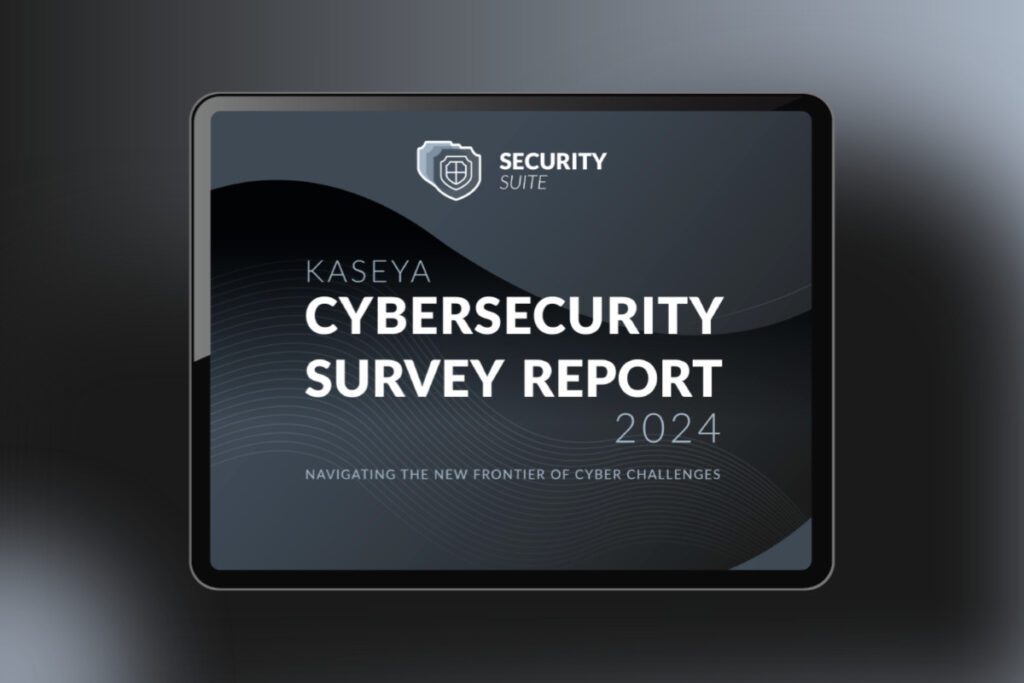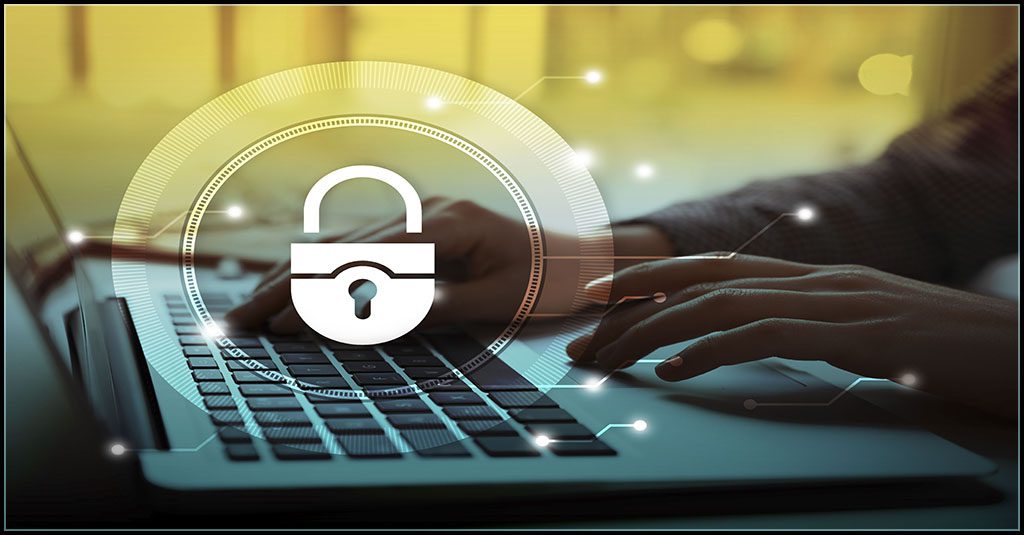User Protection Trends in 2025: What IT Professionals Need to Know

It’s no secret that end users can be the weakest point in a company’s defenses. Whether it’s ignorance of best practices or genuine malice, human beings are a constant source of worry for IT professionals. While the rapid evolution of cybercrime creates additional stress, evolutions in technology and best practices can help alleviate the pressure. Let’s take a look at some of the prominent trends in user protection, the challenges IT professionals could face in this area in 2025 and how to overcome them.

See the cybersecurity challenges that IT professionals faced in 2024, including the rise of AI and what’s next. DOWNLOAD IT>>
What is user protection in cybersecurity?
User protection is a major challenge that is often complicated by users themselves. In our Kaseya Cybersecurity Survey 2024, nearly half the respondents pointed to poor user practices or gullibility as a top cause of cybersecurity trouble, tripling from 15% in 2023 to 45% in 2024. User protection in cybersecurity encompasses a wide variety of strategies, technologies and practices, and the blend of those components may be customized for every organization depending on its needs.
| Component | What it could look like |
| Identity and access management | Implementing multifactor authentication (MFA), role-based access and regular reviews. |
| Security awareness training | Regularly educating users on phishing and best practices. |
| Endpoint protection | Deploying EDR tools, applying updates and securing devices. |
| Email security | Filtering phishing attempts and securing communication channels. |
| Network security | Segmenting networks, monitoring traffic and implementing IDS/IPS. |
| Data loss prevention | Controlling data access and preventing unauthorized transfers. |
| Password management | Enforcing strong passwords and encouraging the use of password managers. |
| Incident response | Establishing clear incident reporting and response processes. |
| Application security | Blocking unsafe sites and restricting unapproved apps. |
| Continuous monitoring | Using real-time threat monitoring and leveraging threat intelligence. |
Source: Kaseya

Learn to defend against today’s sophisticated email-based cyberattacks DOWNLOAD EBOOK>>
6 user protection trends to watch for in 2025
Just as cyberthreats keep evolving, so do defensive measures like user protection. Here are six user protection trends that may impact defenders in 2025.
1. AI-enhanced threat detection and prevention
Artificial intelligence (AI) and machine learning (ML) will continue to revolutionize threat detection and prevention. Traditional monitoring, analyzing and response tools are no match for the increasingly sophisticated cyberthreats that IT professionals will face in 2025. Investing in AI-driven solutions will give defenders the tools they need for real-time threat intelligence sharing, comprehensive anomaly detection and fast automated responses, helping defenders quickly mitigate risks and strengthen user protection.
2. Zero trust architecture becomes the standard
Zero trust principles are no longer optional. The increased call for mobile access and widespread cloud adoption has created a challenge that necessitates a move beyond perimeter-based security models. In 2025, implementing zero trust frameworks will be a standard practice, requiring strict identity verification, micro-segmentation and continuous monitoring to prevent unauthorized access. More than one-third (36%) of respondents in our cybersecurity survey told us that they currently have a zero trust framework.
3. Proactive user training with advanced phishing simulations
Phishing will remain the top cyberthreat businesses face. Half of our survey respondents cited phishing as the cybersecurity issue that impacted their organization the most. Stemming the tide of phishing will continue to be both mission-critical and a major challenge as attackers step up their usage of generative AI to craft near-perfect phishing messages. One majorly effective tool that defenders can pull out of their toolbox is phishing simulation training. High-quality phishing simulations use dynamic content and personalized scenarios to reflect real-world phishing techniques, helping employees recognize and respond to sophisticated attacks. According to Forbes, a solid training program can reduce cybersecurity risks from a staggering 60% to as low as 10%.

See why choosing a smarter SOC is a smart business decision. DOWNLOAD AN EBOOK>>
4. Privacy-first design and user data transparency
Regulations like GDPR and CCPA have paved the way for a privacy-focused mindset, and with consumers becoming savvier about digital risk, their expectations for data transparency and control are growing. Companies will be expected to keep privacy top of mind and demonstrate that by providing clear data handling and storage policies while giving consumers control over their personal information. Privacy features, such as easy data deletion requests and personalized privacy settings, will become universal.
5. Cloud security reinforced by cloud detection and response (CDR)
The rise of cloud detection and response (CDR) solutions is reshaping how organizations protect users and data in the cloud. CDR focuses on detecting, analyzing and responding to threats across cloud environments and SaaS applications, providing comprehensive visibility and protection. As businesses increasingly rely on cloud-based applications and services, CDR becomes essential for identifying sophisticated attacks that exploit cloud vulnerabilities. With more employees working remotely and accessing critical systems from various locations, CDR ensures proactive threat detection, fast remediation and robust security without compromising user experience or productivity.
6. Rise of user-centric security analytics
User behavior analytics (UBA) has emerged as a key field. UBA is a comprehensive way for businesses to identify both accidental and malicious insider threats. By analyzing user actions and detecting deviations from normal behavior, UBA provides real-time insights into potential security risks. In 2025, UBA will evolve beyond big-picture employee monitoring, empowering users with personalized security insights and helping them recognize risky behaviors.
User protection in 2025 will demand a multilayered approach that combines AI, adaptive security measures and user-centered design. For IT professionals, staying on top of these trends and implementing the right technologies and training will be essential to safeguard end users and data alike. By adapting to these changes proactively, organizations can foster a security-aware culture that empowers users to be the first line of defense.

Read our case studies and see how MSPs and businesses have benefitted from using our solutions. READ NOW>
Shoring up a vulnerable point in your defenses
Users are often the weakest barrier in a company’s defense, and that problem is getting worse quickly. In our Kaseya Cybersecurity Survey 2024, nearly half of the respondents also pointed to poor user practices or gullibility as a top cause of trouble, tripling from 15% in 2023 to 45% in 2024. A user-focused approach helps mitigate these risks by addressing the human element in security.
Key benefits include:
- Reducing human error: Training users to recognize threats significantly lowers risks from accidental breaches.
- Strengthening the first line of defense: Empowering users to identify and respond to suspicious activity reinforces security.
- Building security awareness: A focus on user protection fosters a culture of vigilance, enhancing overall resilience.
- Combating sophisticated attacks: Advanced training prepares users to counter AI-driven social engineering.
- Supporting compliance and trust: User-focused security helps meet regulatory requirements and builds client trust.
User protection reduces an organization’s vulnerabilities while strengthening its defenses in a tumultuous cyberthreat landscape. Proactively adapting to these changes fosters a security-aware culture, empowering users as the first line of defense. It is critical for IT professionals to keep up with the trends that shape the space now to be ready for future challenges.

Learn more about growing supply chain risk for businesses and how to mitigate it in a fresh eBook. DOWNLOAD IT>>
Fortify your defenses with smart solutions
Staying agile, informed and prepared is critical to successfully mitigating sophisticated cyberthreats and avoiding a costly data breach. Our cybersecurity solutions offer the tools that MSPs and internal IT teams need to mitigate cyber-risk for businesses quickly and affordably.
BullPhish ID: This effective, automated security awareness training and phishing simulation solution provides critical training that improves compliance, prevents employee mistakes and reduces a company’s risk of being hit by a cyberattack.
Dark Web ID: Our award-winning dark web monitoring solution is the channel leader for good reason. It provides the greatest amount of protection around with 24/7/365 human- and machine-powered monitoring of business and personal credentials, including domains, IP addresses and email addresses.
Graphus: This automated anti-phishing solution uses AI and a patented algorithm to catch and quarantine dangerous messages. It learns from every organization’s unique communication patterns to continuously tailor protection without human intervention. Best of all, it deploys in minutes to defend businesses from phishing and email-based cyberattacks, including zero day, AI-created and novel threats. Book a demo of BullPhish ID, Dark Web ID and Graphus. BOOK IT>>